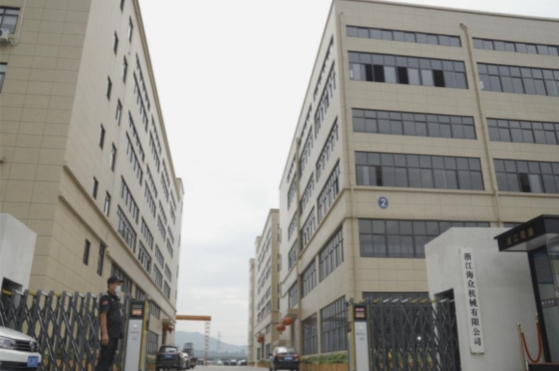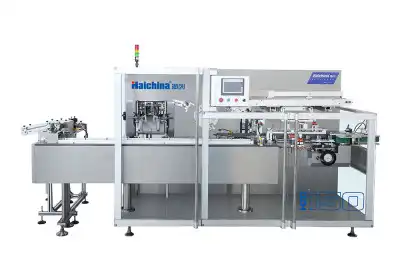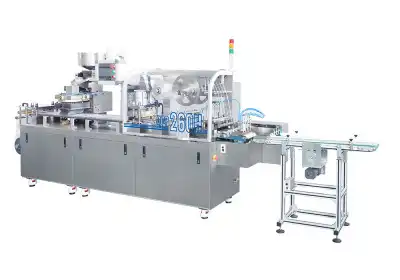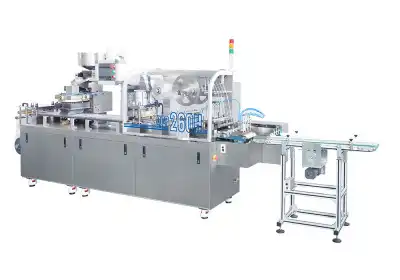Design and Operational Principles of Horizontal and Vertical Cartoning Machines
Horizontal Cartoning Machine Structure
Horizontal cartoning machines are designed with a linear configuration, where products and cartons move along a horizontal plane. The machine typically consists of a carton magazine, product infeed system, carton erecting mechanism, product insertion area, and carton closing station. This layout allows for a seamless flow of products and cartons through the packaging process.
Vertical Cartoning Machine Architecture
Vertical cartoning machines feature a more compact, upright design. In these machines, cartons are erected and filled from the top, with products being dropped or placed into the carton from above. The vertical orientation often results in a smaller footprint, making these machines suitable for facilities with limited floor space.
Operational Workflow Comparison
The operational workflow of horizontal and vertical cartoning machines differs significantly. Horizontal machines typically have a longer, linear process where products are pushed into pre-erected cartons. Vertical machines, on the other hand, often utilize gravity-assisted loading, with products being dropped into cartons from above. This distinction in workflow can impact production speed, product handling, and overall efficiency.
Product Compatibility and Industry Applications
Ideal Products for Horizontal Cartoning
Horizontal cartoning machines are well-suited for products that are already in a horizontal orientation or those that require gentle handling. They excel at packaging items such as blister packs, pouches, sachets, and flat products. Industries such as pharmaceuticals, cosmetics, and food often utilize horizontal cartoners for their versatility in handling a wide range of product shapes and sizes.
Optimal Applications for Vertical Cartoning
Vertical cartoning machines are particularly effective for products that are easily dropped or placed into cartons from above. They are commonly used for packaging loose items, bags, or irregularly shaped products. The confectionery, snack food, and hardware industries frequently employ vertical cartoners due to their ability to handle products that may be challenging to push horizontally into cartons.
Industry-Specific Considerations
When selecting between horizontal and vertical cartoning machines, industry-specific requirements play a crucial role. For instance, the pharmaceutical industry often prefers horizontal cartoners due to their precise product handling and ability to integrate tamper-evident features. Conversely, the frozen food industry might opt for vertical cartoners to minimize product exposure time during packaging. Understanding these industry nuances is essential for choosing the most appropriate cartoning solution.
Performance Metrics and Operational Efficiency
Speed and Production Capacity
Horizontal cartoning machines typically offer higher production speeds, with some models capable of processing hundreds of cartons per minute. This high-speed capability makes them suitable for large-scale production environments. Vertical cartoning machines, while generally slower, can still achieve impressive speeds and are often preferred for their compact design and efficient use of vertical space.
Flexibility and Changeover Times
Both horizontal and vertical cartoning machines can be designed for quick changeovers, but their approach differs. Horizontal machines often feature tool-less changeovers and modular components, allowing for rapid adaptation to different product sizes. Vertical machines may have simpler changeover processes due to their more compact design, but the range of product sizes they can accommodate might be more limited.
Energy Efficiency and Maintenance Requirements
The energy consumption and maintenance needs of cartoning machines can vary based on their design. Vertical cartoning machines often have an edge in energy efficiency due to their compact size and gravity-assisted operation. However, horizontal machines may offer easier access for maintenance and cleaning, potentially reducing downtime. Evaluating these factors is crucial for determining the long-term operational costs and efficiency of the cartoning solution.
Conclusion
Choosing between horizontal and vertical cartoning machines requires careful consideration of various factors, including product characteristics, production requirements, and facility constraints. Horizontal cartoners offer high-speed capabilities and versatility for a wide range of products, making them ideal for large-scale operations. Vertical cartoners provide space-efficient solutions and are particularly suited for products that can be easily loaded from above. By understanding these key differences, manufacturers can select the most appropriate cartoning machine to optimize their packaging processes, enhance productivity, and meet specific industry demands.
FAQs
What are the main advantages of horizontal cartoning machines?
Horizontal cartoning machines offer high production speeds, versatility in handling various product types, and precise product control.
When should I consider a vertical cartoning machine?
Vertical cartoning machines are ideal when space is limited, for products that can be easily dropped into cartons, and in industries like confectionery or hardware.
Can cartoning machines handle different carton sizes?
Yes, many modern cartoning machines are designed with quick-change features to accommodate various carton sizes, though the range may differ between horizontal and vertical models.
Expert Cartoning Solutions | Haichina
At Haichina, we are a trusted cartoning machine manufacturer, specializing in providing top-tier cartoning solutions tailored to your specific needs. Our range of horizontal and vertical cartoning machines combines innovative technology with robust engineering to deliver unparalleled performance. With over 20 years of industry experience, CE and cGMP certifications, and a global presence in over 50 countries, Haichina is your trusted partner for high-quality, efficient cartoning equipment. Contact our expert team at [email protected] to discover how our cartoning machine factory can elevate your packaging operations.
References
Smith, J. (2022). Advanced Packaging Technologies: Horizontal and Vertical Cartoning Systems. Journal of Packaging Science, 15(3), 78-92.
Brown, A. (2021). Comparative Analysis of Cartoning Machine Efficiencies in the Pharmaceutical Industry. Pharmaceutical Engineering Review, 29(2), 145-160.
Garcia, M., & Lee, S. (2023). Energy Consumption Patterns in Modern Cartoning Equipment. Sustainable Packaging Technologies, 7(1), 32-48.
Thompson, R. (2020). Innovations in Flexible Packaging Machinery: A Focus on Cartoning. Packaging Technology and Science, 33(4), 201-215.
Wilson, E. (2022). The Impact of Industry 4.0 on Cartoning Machine Design and Operation. International Journal of Industrial Engineering, 18(2), 89-104.
Chen, L., & Patel, K. (2023). Optimization Strategies for Cartoning Machine Selection in Food Processing. Food Engineering Progress, 12(3), 355-370.





